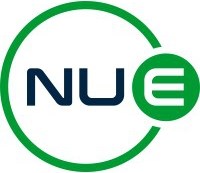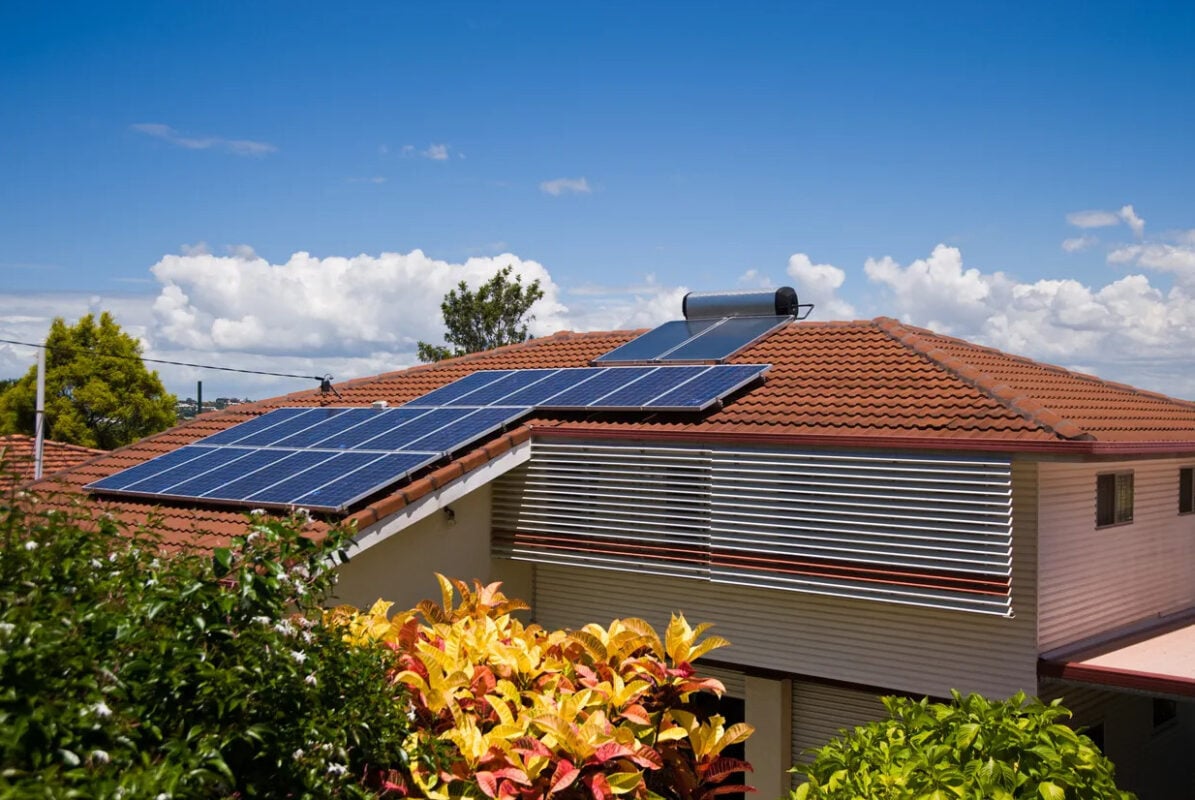NU E Power Corp. Announces Leadership Transition, Board Changes and Closing of the Acquisition of 500 MW of Power Assets from ACT Mid Market Ltd. Surpasses 1 GW Milestone with Global Hybrid Portfolio – Newsfile

Executive Report: NU E Power Corp. Acquisition and Strategic Alignment with Sustainable Development Goals
Introduction
On November 25, 2025, NU E Power Corp. (NU E) announced the successful acquisition of approximately 500 MW of hybrid power development assets from ACT Mid Market Ltd. (ACT). This transaction elevates NU E’s secured global power capacity beyond its 1 gigawatt (1 GW) target, positioning the company as a significant contributor to global energy infrastructure and sustainable development. The acquisition diversifies NU E’s portfolio across North America, Asia, South America, and Africa, directly addressing the growing energy demands of digital and traditional economies.
Strategic Expansion and Contribution to Sustainable Development Goals (SDGs)
Advancing SDG 7 (Affordable and Clean Energy) and SDG 9 (Industry, Innovation, and Infrastructure)
The acquisition marks a critical step in advancing global access to sustainable energy. By integrating hybrid power systems that combine renewable and traditional sources, NU E is enhancing energy reliability and affordability. This strategy is in direct alignment with key SDG targets:
- SDG 7: The expansion to over 1 GW of capacity, with a significant component of renewable assets like solar, increases the share of renewable energy in the global mix and supports the transition to modern, sustainable energy systems.
- SDG 9: The development of resilient, multi-continental power infrastructure fosters sustainable industrialization and innovation. These assets are designed to power critical modern industries, including AI data centres and digital asset mining, thereby building a foundation for future economic development.
Flagship Project: The Dakhan Hybrid Energy & Data Complex
A key asset in the acquired portfolio is the Dakhan Hybrid Energy & Data Complex in Darkhan City, Mongolia. This 200-acre site exemplifies an integrated approach to sustainable infrastructure, directly supporting SDG 9 and SDG 11 (Sustainable Cities and Communities) by providing reliable power and fostering technological development. The complex features:
- Utility-scale solar generation
- Natural gas power facilities
- Grid interconnection capabilities
- Battery energy storage systems (BESS)
- An on-site data centre
This model of co-locating energy generation with high-demand loads minimizes transmission losses and creates a resilient energy hub, contributing to both climate action (SDG 13) and economic growth (SDG 8).
Corporate Governance and Leadership for Sustainable Growth
Board and Management Appointments
To steer its expanded global operations and sustainability commitments, NU E has restructured its leadership team. These appointments are poised to drive the company’s strategic vision, which is centered on responsible and innovative energy development.
- Mr. Broderick Gunning: Appointed President, Chief Executive Officer, and Director.
- Mr. Frederick Stearman: Appointed Chief Technology Officer.
- Mr. Bold Batsukh: Appointed Director – Asia.
This leadership transition reinforces the company’s commitment to leveraging regional expertise and technological innovation to achieve its long-term goals, including a target of 2 GW of capacity by 2027.
Transactional Details of the Acquisition
Asset Purchase Agreement Terms
The acquisition was finalized under an Asset Purchase Agreement approved by the Canadian Securities Exchange. The terms reflect a strategic partnership (SDG 17) aimed at long-term value creation and sustainable development.
- Share Issuance: 11,000,000 common shares issued to ACT at a deemed price of $0.15 per share.
- Warrants: 10,000,000 common share purchase warrants, exercisable at $0.25.
- Cash Payment: A $300,000 cash payment, contingent upon future financing.
- Board Nomination: ACT retains the right to nominate one director to the NU E board.
Conclusion: Commitment to a Sustainable Energy Future
The acquisition of 500 MW of hybrid power assets transforms NU E into a key global player in the energy sector. The company’s load-agnostic strategy, combined with a geographically and technologically diverse portfolio, strongly aligns with the United Nations Sustainable Development Goals. By developing reliable and cleaner energy solutions for both emerging and established industries, NU E is actively contributing to a more sustainable and resilient global economy.
Analysis of Sustainable Development Goals in the Article
1. Which SDGs are addressed or connected to the issues highlighted in the article?
-
SDG 7: Affordable and Clean Energy
The article is centered on the development and acquisition of power generation assets. It explicitly mentions “utility-scale solar,” “battery energy storage,” and a “solar pipeline,” which are key components of clean energy. The company’s mission to “supply reliable power” to various customers, including traditional grids and communities, directly addresses the goal of ensuring access to modern energy. -
SDG 9: Industry, Innovation, and Infrastructure
The article details the development of significant energy infrastructure, such as the “Dakhan Hybrid Energy & Data Complex” and the expansion of a “diversified, multi-continental footprint” of power assets. This involves building resilient infrastructure to support new industries like “AI hyperscalers” and “Bitcoin mining,” fostering innovation in the energy sector. -
SDG 8: Decent Work and Economic Growth
The acquisition, valued in shares and cash, and the company’s rapid scaling (“one of the fastest-scaling, load-agnostic power platforms”) signify substantial economic activity and investment. The development of “large-scale energy and industrial projects” across four continents implies job creation and contributes to economic growth in the energy and technology sectors. -
SDG 11: Sustainable Cities and Communities
The company’s work includes powering “community micro-grids” and “national transmission systems.” This contributes to making cities and human settlements inclusive, safe, resilient, and sustainable by providing the essential energy infrastructure they need to function and grow. The project in “Darkhan City, Northern Mongolia” is a specific example of developing infrastructure for a community. -
SDG 13: Climate Action
By developing and acquiring assets that include “utility-scale solar” and “battery energy storage,” NU E Corp. is actively increasing the capacity for renewable energy generation. This is a direct measure to combat climate change by contributing to the transition away from more carbon-intensive energy sources.
2. What specific targets under those SDGs can be identified based on the article’s content?
-
SDG 7: Affordable and Clean Energy
- Target 7.1: Ensure universal access to affordable, reliable and modern energy services. The article states the company’s goal is to “deliver reliable power” to a wide range of customers, including “national utilities” and “local communities,” which aligns with ensuring energy access.
- Target 7.2: Increase substantially the share of renewable energy in the global energy mix. The portfolio includes “utility-scale solar” and an “Alberta solar pipeline,” directly contributing to increasing renewable energy capacity.
- Target 7.a: Enhance international cooperation to facilitate access to clean energy research and technology… and promote investment in energy infrastructure. The company’s operations span “North America, Asia, South America, and Africa,” demonstrating international investment and development of energy infrastructure.
-
SDG 9: Industry, Innovation, and Infrastructure
- Target 9.1: Develop quality, reliable, sustainable and resilient infrastructure… to support economic development. The company is building a “diversified, multi-continental footprint” of hybrid power projects, including grid interconnections and data centers, which constitutes the development of reliable infrastructure.
- Target 9.4: Upgrade infrastructure… with greater adoption of clean and environmentally sound technologies. The use of hybrid systems that integrate “utility-scale solar” and “battery energy storage” represents an upgrade to traditional power infrastructure with cleaner technologies.
-
SDG 8: Decent Work and Economic Growth
- Target 8.2: Achieve higher levels of economic productivity through diversification, technological upgrading and innovation. The company’s focus on powering high-demand, technology-driven sectors like “AI hyperscalers” and “Bitcoin mining” demonstrates innovation and contributes to economic productivity.
3. Are there any indicators mentioned or implied in the article that can be used to measure progress towards the identified targets?
- Total Power Capacity: The article provides specific figures on the company’s power capacity. It mentions the acquisition of “approximately 500 MW” and surpassing a total of “1 gigawatt (1 GW) of secured global power capacity.” This is a direct indicator of infrastructure development (Target 9.1) and increased energy supply (Target 7.1).
- Future Capacity Goals: The stated goal to “accelerate toward our next target of 2 GW by 2027” serves as a forward-looking indicator for continued expansion of energy infrastructure and services.
- Renewable Energy Component: While the exact percentage is not given, the explicit mention of “utility-scale solar” and an “Alberta solar pipeline” as part of the 1 GW portfolio implies a measurable component of renewable energy capacity, which can be used to track progress towards Target 7.2.
- Geographic Spread of Operations: The company’s presence across “North America, Asia, South America, and Africa” is an indicator of international investment and cooperation in energy infrastructure, relevant to Target 7.a.
- Financial Investment: The terms of the acquisition, including “11,000,000 common shares issued to ACT at a deemed price of $0.15 per share” and a “$300,000 cash payment,” are financial indicators of economic activity and investment in the energy sector (relevant to SDG 8).
4. Table of SDGs, Targets, and Indicators
| SDGs | Targets | Indicators |
|---|---|---|
| SDG 7: Affordable and Clean Energy |
7.1: Ensure universal access to affordable, reliable and modern energy services.
7.2: Increase substantially the share of renewable energy in the global energy mix. 7.a: Enhance international cooperation… and promote investment in energy infrastructure and clean energy technology. |
Total secured power capacity (surpassed 1 GW).
Inclusion of “utility-scale solar” and “Alberta solar pipeline” in the asset portfolio. Development of assets across four continents (North America, Asia, South America, Africa). |
| SDG 9: Industry, Innovation, and Infrastructure |
9.1: Develop quality, reliable, sustainable and resilient infrastructure.
9.4: Upgrade infrastructure… with greater adoption of clean and environmentally sound technologies. |
Total power capacity developed (over 1 GW) and future targets (2 GW by 2027).
Development of hybrid power systems including “solar” and “battery energy storage.” |
| SDG 8: Decent Work and Economic Growth | 8.2: Achieve higher levels of economic productivity through diversification, technological upgrading and innovation. |
Financial value of the acquisition (shares and cash payment).
Serving innovative, high-growth sectors like “AI hyperscalers” and “Bitcoin mining.” |
| SDG 11: Sustainable Cities and Communities | 11.a: Support positive economic, social and environmental links… by strengthening national and regional development planning. |
Development of energy infrastructure for “community micro-grids” and “national transmission systems.”
Specific project development in a city (“Dakhan Hybrid Energy & Data Complex in Darkhan City”). |
| SDG 13: Climate Action | 13.2: Integrate climate change measures into… strategies and planning. | Corporate strategy includes acquiring and developing renewable energy assets like “utility-scale solar.” |
Source: newsfilecorp.com
What is Your Reaction?
 Like
0
Like
0
 Dislike
0
Dislike
0
 Love
0
Love
0
 Funny
0
Funny
0
 Angry
0
Angry
0
 Sad
0
Sad
0
 Wow
0
Wow
0




















































.jpg.webp?itok=0ZsAnae9#)


























